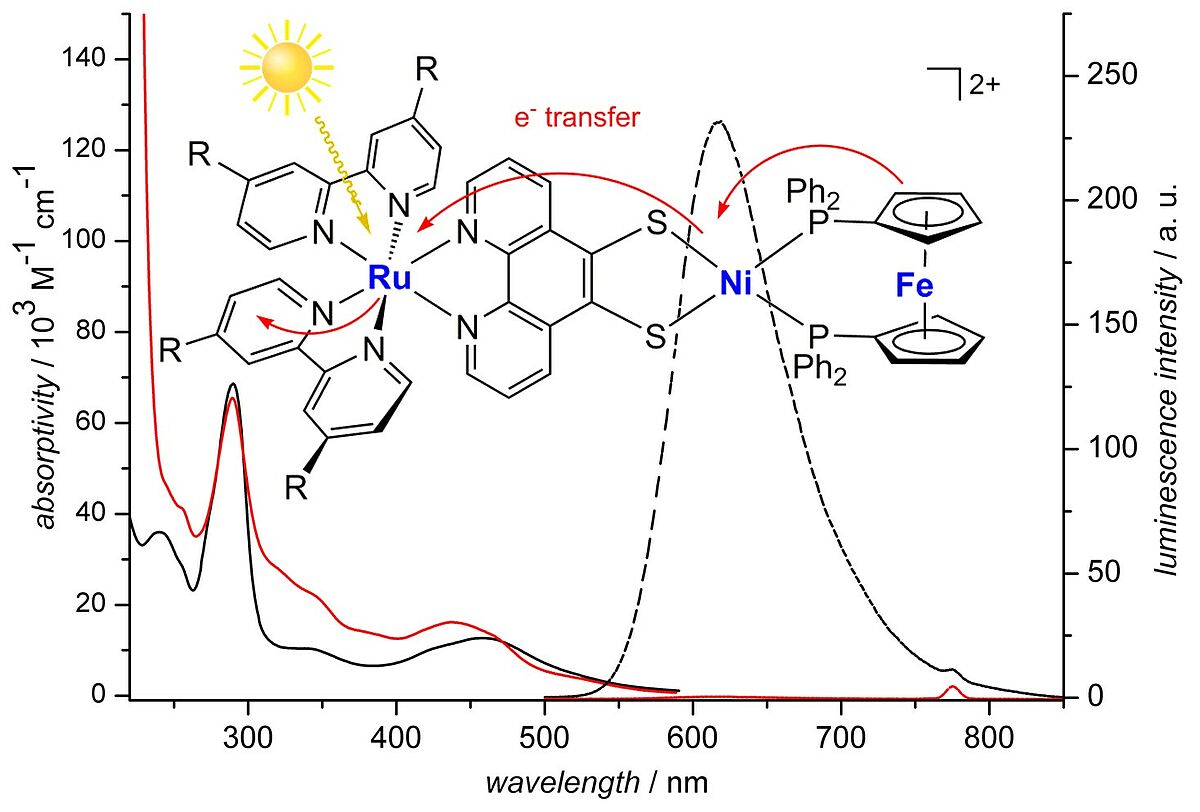Photochemistry
In the future, solar-powered photocatalytic processes can contribute to an environmentally friendly supply of fuel or valuable substances. Charge and energy transfer are key elements of photo-catalysis and their understanding and optimization are essential. Polynuclear complexes with Ru(II) or Ir(III) chromophores, using specifically designed polypyridine ligands, showed remarkable potential for charge separation or energy transfer. Potential applications in electroluminescence, photo-catalysis, dye-based solar cells, luminescent biosensors, and triplet-triplet annihilation have led to strong research activity in this area.
Phenanthroline-5,6-dithiolate is attractive as a straightforwardly extended text book ligand. This rigid, directional-ditopic ligand allows covalent linkage of N,N’-coordinated Ru(II) or Ir(III) chromophores with classical dithiolene complex units, which are known for a versatile redox chemistry. Investigations of the photodynamic behavior of respective polynuclear complexes are performed in cooperation with the group of Stefan Lochbrunner (physics department, Universität Rostock). Our recent project “Coordination chemical scaffolds for a dual proton-coupled photoelectron transfer” is part of the DFG priority program SPP 2102 “Light-controlled reactivity of metal complexes”.
Publications
- "Ultrafast Energy Transfer in Dinuclear Complexes with Bridging 1,10-Phenanthroline-5,6-Dithiolate"
E. Erdmann, M. Lütgens, S. Lochbrunner, W. W. Seidel
Inorg. Chem. 2018, 57, 4849–4863. - "Dinuclear Ru/Ni, Ir/Ni, and Ir/Pt Complexes with Bridging Phenanthroline-5,6-dithiolate: Synthesis, Structure, and Electrochemical and Photophysical Behavior"
D. Schallenberg, A. Neubauer, E. Erdmann, M. Tänzler, A. Villinger, S. Lochbrunner, W. W. Seidel
Inorg. Chem.2014, 53, 8859–8873.

